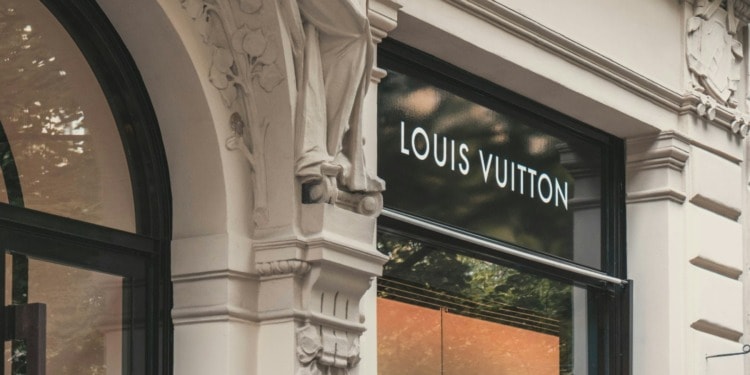On January 17, menswear designer and American singer and songwriter Pharrell Williams opened Louis Vuitton’s 2024 Paris Fashion Week show. This fall’s men’s collection is themed after Western and Americana, with some workwear inspiration sprinkled in.
Meanwhile, the garments, models, and even the show acknowledged the influence that native American groups have on the image of the Western frontier. Designers from the Dakota and Lakota nations contributed accessories, embellishments, and musical accompaniment.
Louis Vuitton gathered a lot of attention during this year’s Paris Fashion Week, and for good reasons. But before we let hype take over, it’s worth asking: How sustainable is Louis Vuitton?
How sustainable is Louis Vuitton?
Louis Vuitton is one of the largest fashion brands in the world. It’s part of the LVHM conglomerate, the luxury goods brand that unites the top names in fashion, cosmetics, wines, jewelry, and more.
On the surface, Louis Vuitton’s sustainability efforts seem good, especially for fashion industry standards. It is reportedly making great progress on many United Nations (UN) Sustainable Development Goals (SDGs) targets, like responsible production and reduced inequality.
But is that enough for the single largest luxury fashion brand on earth?
Related Articles: Paris Fashion Week: Can Glamour Meet Sustainability? | Is the Chiara Ferragni Fashion Brand Sustainable? | Sustainable fashion, have Gucci and Louis Vuitton embraced it?
When looking closely at the company’s actions and plans, it’s clear that something is off. Various sustainability rating organizations give Louis Vuitton a mediocre score, sometimes dipping even lower.
While the fashion giant set significant science-based objectives for 2030, for example, there’s no reason to believe it is on track. It uses some low-impact materials and non-toxic alternatives to chemicals, but not always.
Where the brand loses points is in worker treatment. The company doesn’t use certified suppliers that respect minimum worker rights. This includes paying minimum wages and, during the height of the COVID-19 pandemic, disclosing adequate safety measures.
In some cases, the brand is even linked to possible forced labor, like the cotton extraction facilities in Xinjiang, China.
How sustainable is the Paris Fashion Week?
Louis Vuitton might be somewhat devoted to environmental sustainability, but does that include the choice of participating in fashion events? Fashion weeks, be they in Paris, London, or Milan, certainly play a role in the carbon footprint of fashion brands. Some believe that their influence might run deeper.
Some argue that massively popular fashion events encourage massive consumption of various fashion goods. Those events uplift not only the brands shown on the runway but the entire fashion industry, including unsustainable contributors. It’s the rising tides that lift all boats.
Sustainable fashion advocate Rachel Arthur calls this phenomenon “brainprint.” Our footprint represents what we leave behind and how we influence the world through it. A “brainprint” is instead made of the thoughts left spinning in our heads, and it considers how they influence our future actions.
Like most industry shows, fashion weeks are meant to influence us into increasing consumption. It’s hard to quantify how much that adds to our footprint, but we know that decarbonizing fashion requires reducing consumption. This makes fashion shows problematic for the environment.
One way to resolve this might be highlighted by the UN’s Environmental Programme (UNEP), of which Arthur is a part. In its Sustainable Fashion Communication Playbook, UNEP imagines two points for better industry practices, asking to eradicate all drives to overconsumption from the industry and instead use public industry moments to uplift sustainable practices like renting, second-hand, vintage garments, and restyling.
For all its great moments, the care for the diversity of models and stylists, and great single instances of sustainability, the Paris Fashion Week falls short of the Playbook’s requests.
Editor’s Note: The opinions expressed here by the authors are their own, not those of Impakter.com — In the Featured Photo: A Louis Vuitton store. Featured Photo Credit: Christian Wiediger.













